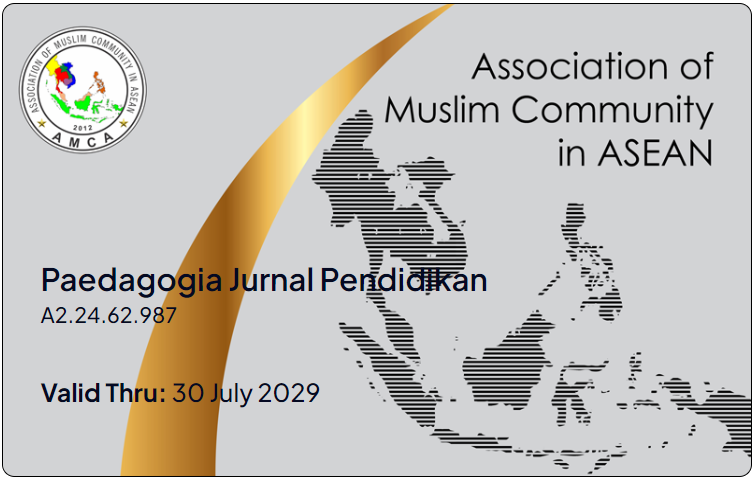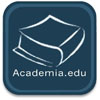ASSESSMENT OF THE PSYCHOSOCIAL LEARNING ENVIRONMENT FOR BIOLOGY LEARNING IN AKOKO SOUTH WEST IN ONDO STATE, NIGERIA
Abstract
The role of psychosocial factors in improving students learning is well documented in literature, as well as its prospects and benefits in addressing educational problems. Hence the need to assess the psychosocial learning environment for biology learning. This study revealed biology students’ anxiety level, their sense of belonging and the classroom climate as perceived by the students. The descriptive survey research was conducted with 391 biology students selected randomly from a population of all senior secondary school biology students in Akoko South West, Ondo State, Nigeria. A four-sectioned validated questionnaire, with reliability index of 0.72, 0.82, and 0.77, served data collection purpose. Findings revealed that students’ anxiety level is moderate (mean score=1.49). Although, students often get depressed if they don’t perform up to expectation (1.27), they are not anxious whenever test is approaching (1.54), and they are unsure of their anxiety level with respect to failing (1.50). Also, students exhibit a moderately high sense of belongingness in school (mean=1.68) but students feel ignored in most extra-curricular activities (1.31) and believe that their teachers are often too busy to attend to their personal needs (1.28). Students accepts their classroom climate as conducive for learning (1.76), organized (1.74), and not disoriented (1.59). The result also reveals that the classroom atmosphere is moderately positive (mean=1.66). It was recommended that educational stakeholder and curriculum implementers should employ techniques that will further decrease students’ anxiety and boost their sense of belonging. The classroom climate should be supplemented with psychosocial enrichment.
Keywords: Psychosocial Learning Environment, Anxiety, Sense of Belonging, Biology
Downloads
References
Alebiosu K.A and Emmanuel M. (2018). Towards optional enhancement of practical work and activities in school science. Journal of Research in science Education. 2(1), pp-1-10.
Anderson, L.E. (2007). An examination of classroom context; effects of lesson format and teacher training in patterns of teacher-contact during small group instruction. Journal of Classroom Interaction, 45 (1), 25-31.
Ayoola, Y.A. and Owolabi, O.T. (2018). Effects of Inquiry Based Methods and Computer-Assisted Instructions on Students’ performance in Physics in Nigeria Federal Government Colleges. Journal of Research in science Education. 2(1), PP-66-71.
Babafemi, G.T and Adewumi, A.O. (2019). Effect of Individualised Creative Mapping on Students’ Conceptual Understanding and Sustained Knowledge in Biology. Journal of Education Research and Rural Community Development. 1(1), 14-24
Boyler, K.L (2016). Convey the importance of science. www.tunesunion.com/tuplusopinion/article/convey-the-importance -of-science-10638828.php Retrieved 22/04/2021
Braxton, J.M. (Ed.). (2000). Reworking the student departure puzzle. Vanderbilt University Press.
Caymaz, B. and Aydın, A. (2021). An investigation of secondary school students’ anxiety and motivation levels towards science course in terms of some variables. International Journal of Psychology and Educational Studies, 8(3), 13-27. https://dx.doi.org/10.52380/ijpes.2021.8.3.189
Ezike, B.U.,(2018) Classroom Environment And Academic Interest As Correlates Of Achievement In Senior Secondary School Chemistry In Ibadan South West Local Government Area, Oyo State, Nigeria. Global Journal Of Educational Research. 17, pp:61-71. Accessed 20/10/21 https://academicjournals.org/journal/ERR/article-references/B4E1C7162538
Haertel, G. D. & Walberg (2007). Socio psychological environment and learning. A quantities synthesis. British Educational Research Journal. 7(27), 36
Hirsch, J. L., & Clark, M. S. (2019). Multiple paths to belonging that we should study together. Perspectives on Psychological Science, 14(2), 238-255. https://clarkrelationshiplab.yale.edu/sites/default/files/files/HirschClark(2019).pdf.
Mahama, I., Asante, L. F., Mensah, K. J., Kwaw, R., Amponsae, A. M., Nartey, P. & Opoku, B. E. (2021). Attached or not attached: Does different learning styles exist among students with or without sense of belonging amidst covid-19? Journal of Educational Technology & Online Learning, 4(2), 175-192.
Mamun, M.A. (2021). English Language Anxiety of Tertiary Level Learners in Bangladesh: Level and Sources. English Language Teaching. 14(11), pp-49-60 doi: 10.5539/elt.v14n11p49 URL: https://doi.org/10.5539/elt.v14n11p49-60
Mardianti, N., Wijayati, P.H and Murtadho, N. (2021).The Correlation Between Students’ Reading Anxiety and Their Reading Comprehension in ESP Context. International Journal of Language Education. 5(2), pp-15-29 (Online) doi: https://doi.org/10.26858/ijole.v5i2.15440
Mohammed, R.E. (2018). Effects of Target task model in Senior Secondary School Students’ Performance in physics in Ilorin, Kwara State. Journal of Research in science Education. 2(1), pp-72-80.
Muhlis, A. (2017). Foreign Language Reading Anxiety among Indonesian EFL Senior High School Students. English Franca, 1(1), 19–44.
Murphy, M. C., Boucher, K., & Logel, C. (2021). How to help students feel a sense of belonging during the pandemic. Retrieved from https://greatergood.berkeley.edu/article/item/how_to_help_students_feel_a_sense_of_belonging_d uring_the_pandemic on15/02/2022
Nettasinghe, N.A.R. and Samarasinghe, K. (2018). Psycho-social Learning Environment from Nurse Students' Perspective. Universal Journal of Educational Research. 6(12) PP: 2707-2714. http://www.hrpub.org DOI: 10.13189/ujer.2018.061202
Olugbuyi, P.O., Oginni, O.I., Ayeni, M.F. and Fatoba, J.O. (2018). Digitalizing science education: The panacea for Apathy of the Present Nigeria youth. Journal of Research in science Education. 2(1), pp-52-57.
Ozgelen, S (2012). Scientist’ science process skills within a cognitive domain framework. Eurasian Journal of Mathematics, Science & Technology Education. 8(2), 283-292
Potts, C. (2021). Seen and unseen: First-year college students’ sense of belonging during the covid-19 pandemic. College Student Affairs Journal. 39(2), pp. 214 – 224.
Reynolds, C.R., Livingston, R.B., & Willson, V. (2006). Measurement and assessment in education. Upper Saddle River, NJ: Pearson.
Shamaki, T.A.,(2015).Influence of Learning Environment on Students’ Academic Achievement in Mathematics: A Case Study of Some Selected Secondary Schools in Yobe State – Nigeria. Journal of Education and Practice, 6(34), pp40-44. Accessed 30/10/22 from: https://files.eric.ed.gov/fulltext/EJ1086080.pdf
Spielberger, C. D. (1983). Manual or the State-Trait Anxiety Inventory. Palo Alto, CA: Consulting Psychologists Press. https://doi.org/10.1037/t06496-000
Strayhorn, T. L. (2012). College students’ sense of belonging: A key to educational success for all students. Routledge
Tella, A, (2008).Teacher Variables As Predictors of Academic Achievement of Primary School Pupils Mathematics: International Electronic Journal of Elementary Education. 1(1)
Telli, S., den Brok, P., and Cakiroglu, J. (2010). The importance of teacher-student interpersonal relationships for Turkish students’ attitudes towards science. Research in Science and Technological Education, 28, 261-276.
Tian, C. (2019). Anxiety in classroom English Presentations: A Case Study in Korean Tertiary Educational Context. Higher Education Studies. 9(1), pp-132-143. URL: https://doi.org/10.5539/hes.v9n1p132
Ugwumaduka, E.B. and Adekunle, B.O. (2018). Predicting science achievements in senior secondary school in Ijebu north LGA, Ogun State: Role of Emotional Intelligence and Self Efficacy. Journal of Research in science Education. 2(1), pp-81-90.
Velayutham, S. and Aldridge, J. M. (2012). Influence of psychosocial classroom environment on students’ motivation and self-regulation in science learning: A structural equation modelling approach. Research in Science Education (online), 1-21. doi 10.1007/s11165-011-9273-y
Waldman,C.(2016),Four Elements for Creating a Positive Learning Environment; Avaialble at https://all4ed.org/four-elements-for-creating-a-positive-learning-environment/ Accessed September 20/9/2020
Walton, G. M., Cohen, G. L. (2007). A question of belonging: Race, social fit, and achievement. Journal of Personality and Social Psychology, 92, 82–96
Yusuf, M. O. and Afolabi, A.O. (2010). Effects of Computer assisted instruction on secondary school students’ performance in Biology. The Turkish Online Journal of Educational Technology. 9(1) 62-69.
Copyright (c) 2022 Paedagogia: Jurnal Pendidikan

This work is licensed under a Creative Commons Attribution-NonCommercial 4.0 International License.
The author agrees to the following conditions upon publishing a work to Paedagogia: Jurnal Pendidikan:
1. Each article is licensed under a Creative Commons Attribution-NonCommercial 4.0 International License. The author(s) recognizes that Paedagogia: Jurnal Pendidikan has the right to be the first to publish under a Creative Commons Attribution-NonCommercial 4.0 International License. This license permits the copying and redistribution of this material in any form or format, as well as the composition, modification, and creation of derivative works of this material for any purpose, but Non commercial, as long as the author is credited with the original work.
2. Authors may submit articles separately or arrange for non-exclusive distribution of manuscripts previously published in this journal in other forms (e.g., to the author's institutional repository, publication in books, etc. ), provided that the manuscript is acknowledged as having been published first in the Paedagogia: Jurnal Pendidikan.
3. A copyright submission agreement must attach each approved manuscript prior to publication. You may obtain the form for the copyright submission agreement here (INA) (EN).

































 This work is licensed under a
This work is licensed under a 